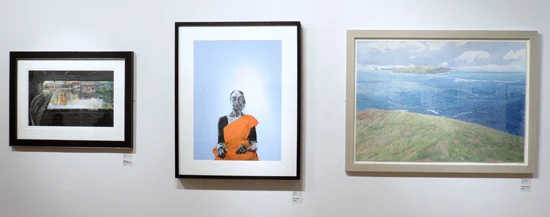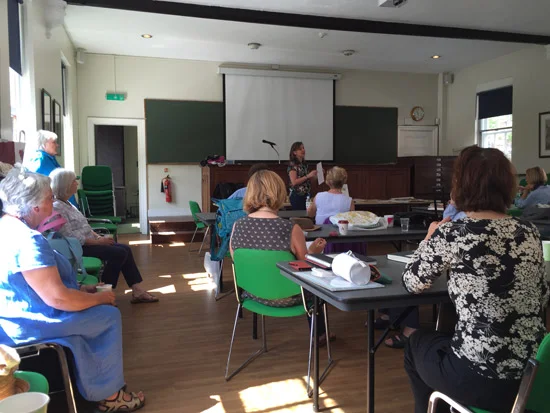This is my second review of the watercolour exhibitions currently on display at the
Fitzwilliam Museum in Cambridge until Sunday 4th October.
This one is devoted to
Ruskin's Turners - and is a little later than planned. You can find out more about them below. However the important things to note is that there are
very long intervals between exhibitions of these paintings. The last exhibition was 15 years ago in 2000!
I was very impressed by the exhibition. It's well lit so you can see the watercolours clearly. The images also have very informative annotations. I'm certainly going back for a second look before the exhibition closes.
Note:
You can see my review of the Watercolour: Elements of nature (Mellon Room) which finishes 27 September in Two watercolour exhibitions at the Fitzwilliam Museum, Cambridge
Ruskin's Turners
John Ruskin was an amazing man - one would struggle to think of his equal today.
Ruskin was the greatest British art critic and social commentator of the Victorian Age. His ideas inspired the Arts and Crafts Movement and the founding of the National Trust, the Society for the Protection of Ancient Buildings, and the Labour Movement. The Ruskin Research Centre
He was drew and painted in watercolour. His hero was JMW Turner.
25 of the 55 watercolours owned by the Fitzwilliam were gifted to the Museum by John Ruskin in 1861.
The Fitzwilliam's "Turner Collection" of watercolours was devised as a teaching aid for students at the University of Cambridge. The collection illustrates the development in the use of watercolour by Turner over the course of his very long career as an artist - from age 17 to 68 years old. They include book illustrations, architectural drawings and landscapes.
Ruskin was also one of the first collectors to recognise that light actually damages watercolours which contain fugitive pigments in the paint. He took practical action in two ways to limit the damaging effect of light.
 |
The Mahogany Cabinet made to store
Ruskin's Turner Watercolours
is also on display at the Fitzwilliam Museum. |
- First his gift was conditional on the Fitzwilliam collection of Turners never being lent outside the Museum. Hence they are only shown at limited intervals - which is why this is your last chance to see them for probably the next 10 years.
- Second, he made sure that when stored that the collection was kept safe from light inside the mahogony of a cabinet case made especially for the collection
You can
view the Turner Watercolours online on the website.
This post also contains images of some of the paintings on view.
The link in the title of each is to its page on the Fitzwilliam online collection website which provides much more information about that individual painting.
Interestingly they're all listed as drawings - because of course watercolour was considered to be a sketching medium rather than a serious painting medium.
I have to say I'm delighted that I've got the large versions to look at and can study his technique!
For all those devotees of the pen and ink and watercolour wash, this exhibition provides an inspiration! He uses a pencil for loose shapes and then I think he applies simple washes - often using just two colours - and then restates the shapes of the buildings and people and animals very simply using sepia ink. The record says he also uses black ink but I must confess I'm struggling to see where.
Now you know who inspired me to always use sepia ink when sketching!
 |
Brunnen, Lake Lucerne in the distance c.1841-3,
J.M.W Turner (1775-1851).
watercolour over graphite, with pen, brown and black ink on paper
(touches of watercolour, verso, from next page)
height, 225, mm; width, 290, mm
Image: copyright Fitzwilliam Museum, Cambridge |
In 1842, Turner presented his dealer, Thomas Griffiths, with a group of fifteen sample watercolours from which he proposed to work up ten large finished watercolours on receipt of commission for specific views. In the event, Griffiths succeeded in finding only three purchasers - one of whom was Ruskin - who between them agreed to buy all but one of the finished group. These Ruskin later described as ‘the ten drawings which Turner did for love'. Turner first visited Brünnen in 1802. During his visits to Switzerland in 1841 and 1842, he extended his knowledge of the central Alps and the northern shore of Lake Geneva, concentrating particularly on Lake Zug and Lake Lucerne and their surrounding mountains. He explored Brunnen most extensively in 1843. In later life, Ruskin came to prefer Turner’s Swiss sketches to his finished views, which he complained Turner had ‘spoiled’ by putting in the ‘ugly hotels’. (Text from 'Ruskin's Turners' Exhibition Website).
Ruskin regarded Turner as "
the only perfect landscape painter that the world has ever seen".
Turner for his part considered that Ruskin saw rather more in his paintings than he ever painted!
 |
|
watercolour over graphite with gum arabic on paper
J.M.W Turner (1775-1851) - given by John Ruskin in 1861
watercolour over graphite, with pen, brown and black ink on paper
(touches of watercolour, verso, from next page)
height, 280 mm; width 400 mm
Image: copyright Fitzwilliam Museum, Cambridge
|
This image relates to a series made for subsequent line engraving in Charles Heath’s ‘Picturesque Scenery in England and Wales’. It's thought that this is a view taken from the north-west of Swaledale, between Whitcliffe and High Gingerfield. It's also thought to be based on a drawing made during a walking tour of the North Riding of Yorkshire in about 1816.
Yes - that is a dog performing tricks with a hat on in the foreground!
You can
see the five sketchbooks completed by Turner on his walking tour of Yorkshire in 1816 on the Tate Britain website.
 |
Flüelen from the lake c.1840-43
J.M.W Turner (1775-1851) - given by John Ruskin in 1861
watercolour with some red and black ink
and scratching out on paper watermarked Whatman
Image: copyright Fitzwilliam Museum, Cambridge |
This one was last seen in 1959!
As always with Turner, he demonstrates great interest in the weather and atmospheric effects generated within both sky and water.
Fluelen lies at the Southern end of Lake Lucerne, and was an important point on the route to Italy via the St Gothard Pass. A ‘sample’ view of 'Fluelen' (Tate Gallery) was worked up into a finished watercolour in November 1845 for H. A. J. Munro of Novar, one of Turner’s principal patrons. As in that drawing, Turner concentrates on the two most prominent buildings in the town, the baroque church of Sts George and Nikalaus and, behind it, the medieval keep known as Schlösschen Rudenz. Turner visited Fluelen in the early 1840s. Broad stylistic similarities with 'Venice, storm at sunset' in the rendering of the vortex of the storm and agitated water surface support a date of around 1841 for this view.(Text from the 'Ruskin's Turner's Exhibition Website).
 |
Venice from the Lagoon 1840
Venice, from between the Giudecca and the Isola di San Giorgio, with the Bacino di San Marco c.1840,J.M.W Turner (1775-1851) - given by John Ruskin in 1861
watercolour and bodycolour over graphite and black ink on paper
(note the comments about the paper below)
height, 230 mm; width 305
Image: Fitzwilliam Museum, Cambridge |
This painting of Venice one was last on display in 1959 and 2000. His paintings of both boats and people are gestural - his main interest lies in the overall scene and the colour and atmospheric effects found in Venice.
Ruskin first visited Venice in 1835, and over the subsequent decade became alternately depressed and outraged by the physical degradation of the city. To an extent, he found consolation in Turner’s ‘dreamlike and dim, but glorious’ vision of the city. The fact that he gave all the drawings he ever owned of Venice to either Oxford or Cambridge has been considered by some commentators as a reflection of his dismay at the destruction of the city. This watercolour is executed on paper which is identifiable by its watermark as a forgery of a Whatman paper, possibly Austrian in origin. The surface of the paper is quite different to any other which Turner used in Venice, and makes the effects of bodycolour very pronounced. (Text from 'Ruskin's Turners' Exhibition Website)
Some of the paintings include groups of figures in the foreground. His treatment of them varies
 |
Orléans, Twilight (c. 1826-1831)
J.M.W Turner (1775-1851) - given by John Ruskin in 1861
Watercolour and bodycolour with pen, red and grey ink on blue paper
height, 140 mm; width 195
Image: Fitzwilliam Museum, Cambridge |
Ruskin acquired this watercolour from Hannah Cooper (Turner’s stockbroker’s niece) in May 1858. It is one of a group of ten drawings on blue paper which he acquired at this time, paying fifty guineas per design. He referred to the series communally as Turner’s ‘blue drawings’. The set of views of the Loire was, in fact, the first for which Turner made extensive use of a blue paper ground. The paper was manufactured only sometime after 1821 at a mill near Bath, and Turner’s willingness to use it reflects his enthusiasm for experimenting with new materials. (Text from 'Ruskin's Turners' Exhibition Website).
The paintings above and below are painted on the blue paper which Turner favoured.
For those wanting to try blue paper like the one used by Turner you should take a look at
the Turner Blue paper on the Rushcombe Handmade Papers website. This paper mill was allowed access by Tate Britain to the papers in the Turner Collection to test how they were made and then the papers produced today have been made according to the same traditional processes as applied at the time. It's as close as you will ever get to painting on the same paper that Turner used.
 |
Yarmouth Sands c.1824-1830
J.M.W Turner (1775-1851) - given by John Ruskin in 1861
Watercolour and bodycolour on blue paper
eight 185 mm, width 245 mm
Image: Fitzwilliam Museum, Cambridge |
Turner's paintings of people always make me wonder whether he actually saw them like this or added them in from the very many sketches he made over time.
- In the Orléans, Twilight painting above - which is very small - the figures are characterised by shapes for heads and legs with no a lot of definition in the body. Dabs of paint then differentiate one from the other.
- In the Yarmouth Sands painting - which is a little larger - the people are painted with more definition and not a little bodycolour.
Sadly,
there is no catalogue for this exhibition or for the Ruskin Collection of Turner's artwork as a whole. Surely some sponsor could be found for a book of this particularly unique collection - or a grant sought from the Heritage Lottery Fund?
The exhibition also includes paintings by John Ruskin himself. It's not difficult to note the difference in colours used between Turner and Ruskin. The sketch of a Palazzo in Pisa below is also focused on the architecture and very much reminds me of the type of sketch produced by urban sketchers around the world....
 |
Palazzo Agostini, Pisa.
Ruskin, John (British, 1819-1900).
Ink used with the tip of the brush, watercolour and some white on grey-green paper,
height 478 mm, width 338 mm
Image: Fitzwilliam Museum, Cambridge
|



































